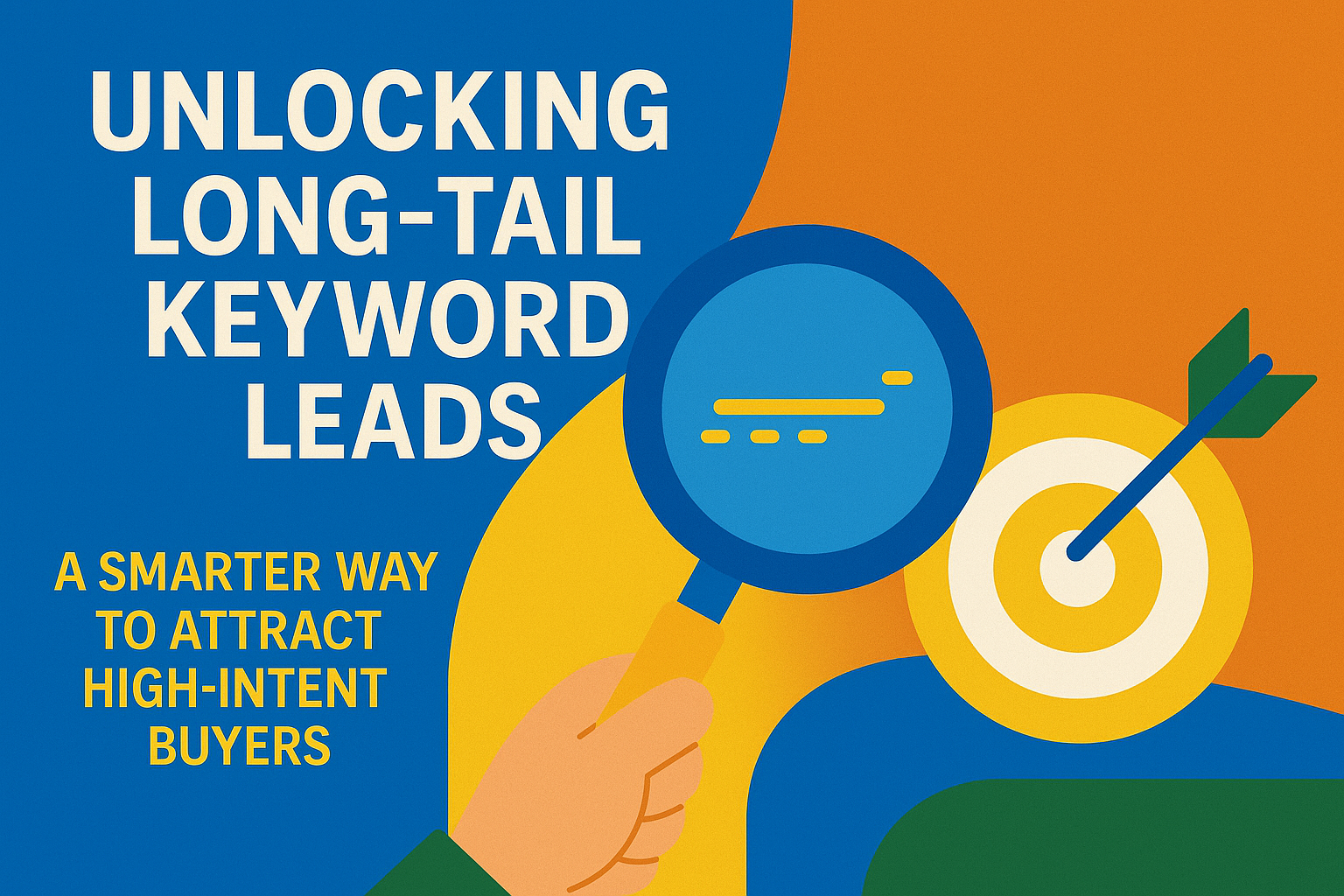By Janice Ramos
Getting traffic isn’t enough, you need the right traffic. And if you’re serious about improving lead quality, customer acquisition cost (CAC), and long-term SEO performance, it’s time to get strategic with long-tail keyword leads.
Why Long-Tail Keywords Matter More Than Ever
Long-tail keywords are longer, more specific search phrases that users enter when they’re closer to making a buying decision. Unlike broad, high-volume keywords (like “running shoes”), long-tail terms (like “best women’s trail running shoes for flat feet”) attract users with a clear purchase intent.
These keywords are often overlooked, but for marketing teams focused on efficiency and ROI, long-tail keyword leads can quietly become your most valuable digital asset.
The Data Behind Long-Tail Keyword Leads
Here’s why long-tail keyword strategies are outperforming traditional ones:
- Higher Conversion Rates: Users searching with long-tail terms often know what they want, which means they’re more likely to convert.
- Lower CPC (Cost-Per-Click): In paid search, long-tail terms are less competitive, leading to more efficient ad spend.
- SEO Advantage: These keywords are easier to rank for organically and help build topical authority over time.
If your paid and organic efforts aren’t producing consistent, high-intent leads, this shift in strategy might be the missing piece.
How to Use Long-Tail Keywords Strategically
Implementing a smart strategy around long-tail keyword leads means aligning them with every phase of your funnel:
- Top-of-Funnel (TOFU): Use informational long-tail queries to attract users searching for answers. (e.g., “how to fix dry skin in winter”)
- Mid-Funnel (MOFU): Optimize for comparison terms. (e.g., “best skincare routine for dry skin vs oily skin”)
- Bottom-of-Funnel (BOFU): Target high-intent purchase terms. (e.g., “buy dermatologist-approved dry skin cream online”)
Combine this with clean site structure, optimized landing pages, and strong conversion tracking, and you’ll not only drive more leads, but better ones.
Key Tools & Tips to Maximize Your Results
- Use Google Search Console + GA4 to identify existing long-tail opportunities from current traffic.
- Build content around clusters: One high-volume keyword supported by several long-tail blog posts or landing pages.
- Integrate your PPC and SEO: Use PPC data to test and validate high-converting long-tail keywords before committing SEO resources.
The result? Your team gets higher-quality leads, stronger attribution, and improved performance across paid and organic channels, all without guesswork.
The Bottom Line: More ROI, Less Waste
If your internal team is stretched thin and juggling inconsistent results, it’s time to rethink your strategy. long-tail keyword leads deliver what data-driven marketers need: better targeting, more control, and measurable returns.
Ready to Unlock More High-Intent Leads?
At DoubleDome Digital Marketing, we help companies like yours scale with data-backed SEO strategies designed to attract long-tail keyword leads that convert. From deep-dive keyword research to hands-free implementation and reporting, our SEO service is built for marketing leaders who want transparency and results.
Request a Free SEO Strategy Call and start turning high-intent search traffic into real business growth.









